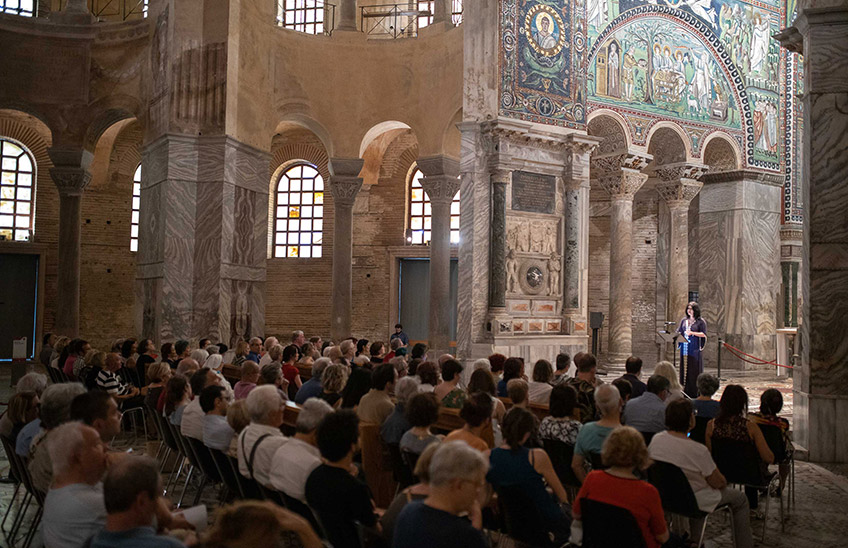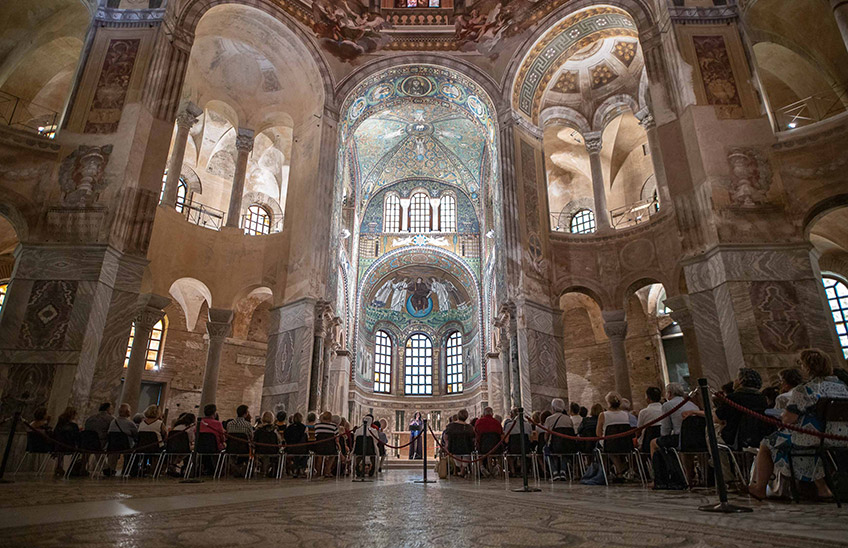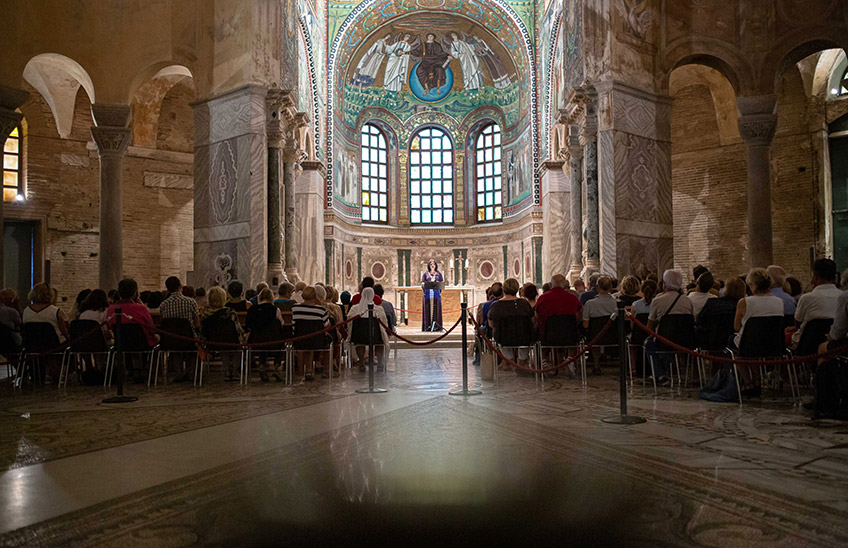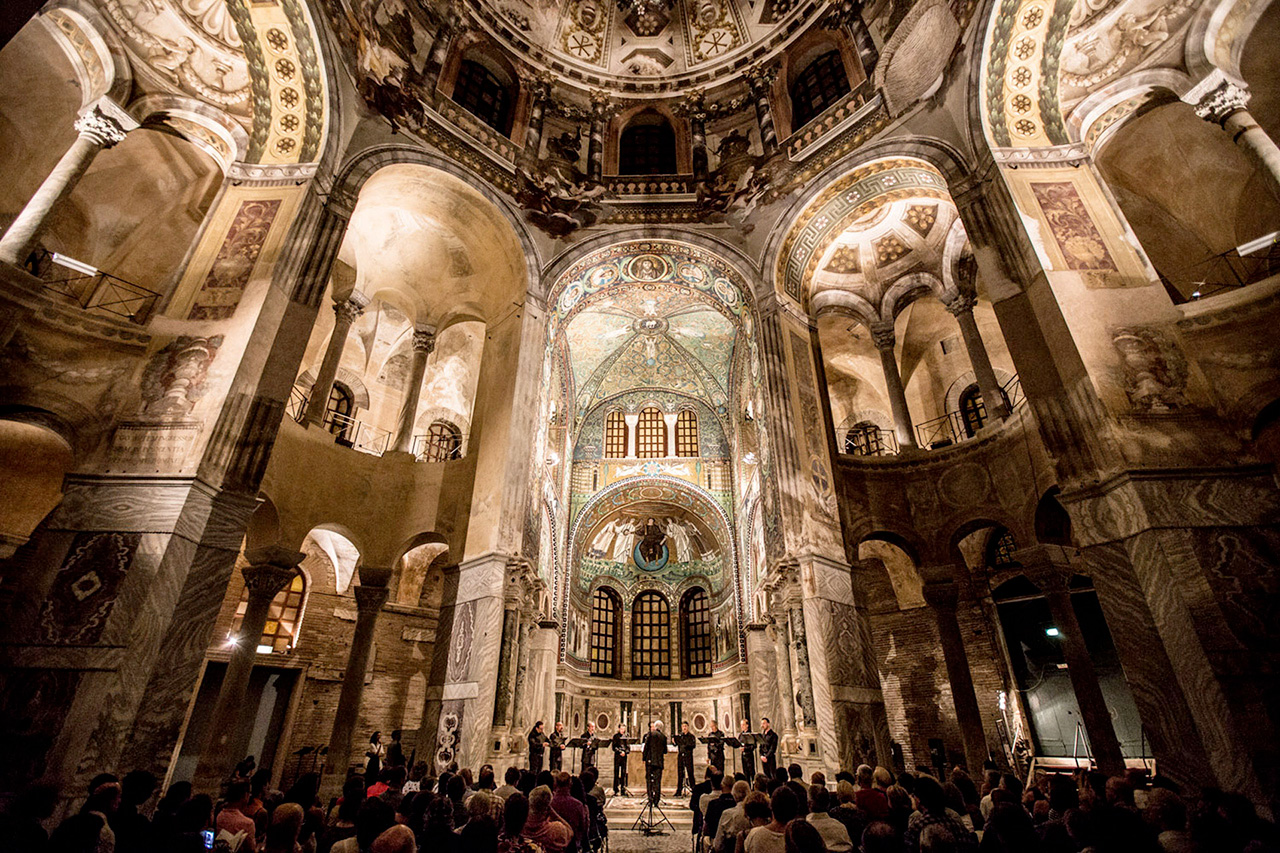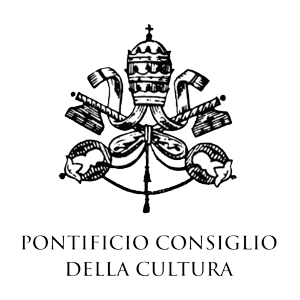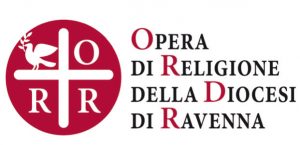© Luca Concas
Vespers at San Vitale
Il canto greco-bizantino
Nektaria Karantzi vocals
Programme
Trisagion & Ecco lo Sposo
Plagal of the fourth mode
Signore delle Schiere
Plagal of the second mode
Salmo di Davide n. 65 & Terirem
Plagal of the second mode; music: monks of the Simonopetra Monastery, Mount Athos
Rallegrati, Promessa Sposa
Plagal of the fourth mode
Non nascondere il tuo volto da me
Plagal of the fourth mode
Mi hanno spogliato delle vesti
Plagal of the second mode
Dio è con noi
Plagal of the second mode
Madre di Dio
Diatonic grave mode; Musica: Elder Daniel Katounakiotis, Monte Athos
O luce radiosa
Secondo modo (il più antico inno cristiano)
L’angelo gridò
Plagal of the first mode
Inni per la Messa
Plagal of the first mode
Salmo di Davide n. 102 Benedici il Signore, anima mia
Plagal of the fourth mode
A leading interpreter of the Byzantine chant proposes a repertoire whose history is lost in the mazes of time. The chant performed by just one voice, without instruments and based on the so-called ecclesiastical tones, unfolds amidst odes and canons, poems, troparions and hallelujahs. But it is especially the expression of the Greek civilisation that, as the artist explains, “includes Orthodox hymns and also a large variety of folk songs: songs of the sea, of the distant homeland and of love, which mirror the deep religious feelings of mankind” that finds its complete expression in music and in the chant. She explains that, “In Greece the musical world is divided into two macrocosms, religious Byzantine music and traditional music, both issuing from ancient Greek music. The main difference lies in the scope of the chant: it can either honour God or sing about daily life and the events of mankind, from birth to death”.
